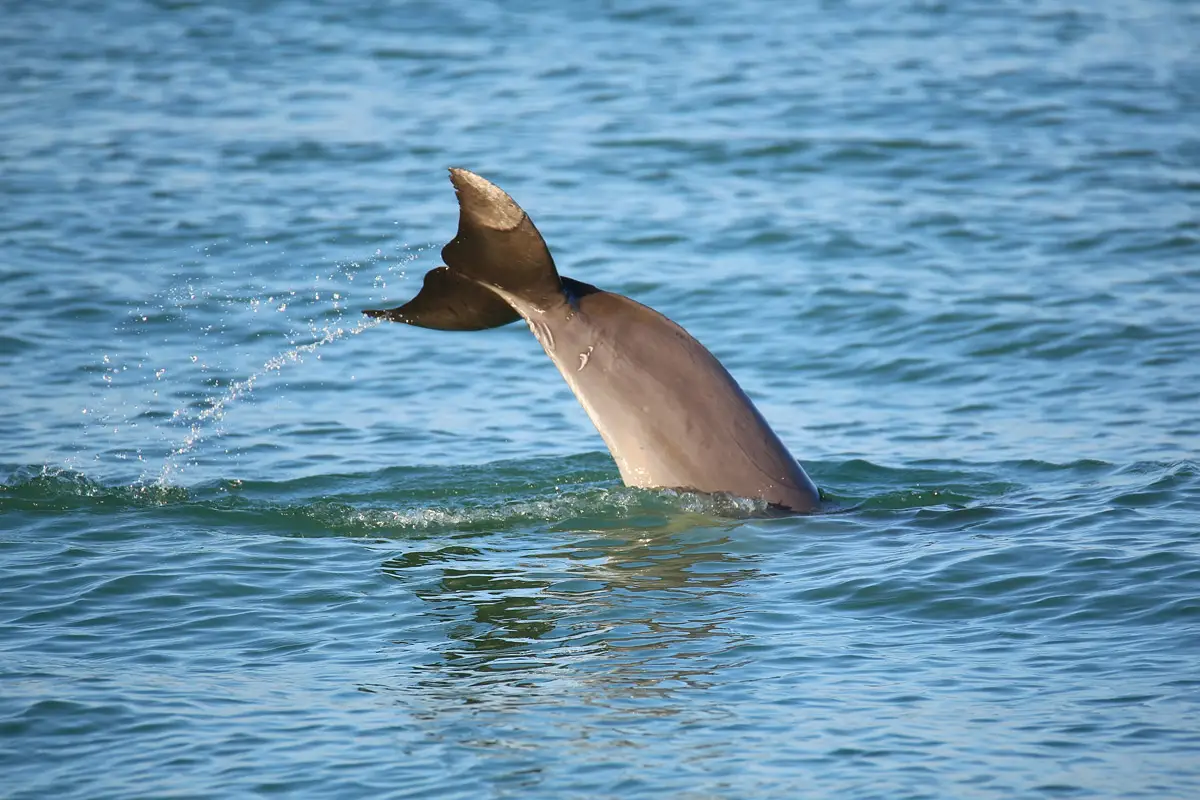Everyone loves dolphins! It is so exciting to see them up close in person so it is no wonder they are often the stars and we get asked so many questions about them. We decided to answer some of the most common questions here in our "Captains Log".
Are there dolphins in South Carolina?
There are many dolphins in South Carolina waters, specifically bottlenose dolphins, which can frequently be sighted in the coastal waters. This includes Charleston Harbor and the intracoastal waterway, where our tours take place. While boating, at least one pod of dolphins is normally seen. Sightings occur on the docks, too. Anecdotally, I have seen dolphins swim next to me while working on the docks of Charleston. Bottlenose dolphins are the most abundant marine mammal species here (1). It is illegal to feed or disturb them, but we can have lots of fun watching them.
What time are dolphins most active?
Bottlenose dolphins take advantage of low tide and become active as they strand feed. Strand feeding is when the dolphins swim up to the shore, driving fish onto the land, much like cattlemen herding livestock. The dolphins strand themselves on the bank along with the fish, lean to their sides, open their mouths and grab their prey. Then, they wiggle back into the water. This feeding mechanism only occurs in Florida, Georgia and South Carolina (4), and is most common during September and October because this is when the mullet population is highest (5). Mullet are small fish, not to be confused with the “business in the front, party in the back” hairdo.
Why do dolphins like to swim next to boats?
Dolphins like to swim at the bow of boats because the force from the boat while underway pushes the dolphins forward, making it easier for them to swim. Swimming next to the boats may be out of curiosity, or entertaining for them. Unfortunately, some people have been known to feed the dolphins so that may be a factor also. As aforementioned, this is illegal.
How high can dolphins jump out of the water?
The height a dolphin can jump varies by species, and if they are wild or in an aquarium setting where they are trained to maximize their capabilities. The wild bottlenose dolphin can jump up to 15 feet. The trained bottlenose of the National Aquarium in Baltimore can reach almost 20 feet (2). To put it into perspective, that’s the size of a grown male giraffe (3). They jump to gain distance, show dominance, to attract mates and for fun.
Do dolphins migrate?
Some dolphins chose to stay in a general area, however most are migratory. They travel north and south along the coast to follow warmer waters, higher salt content and populations of prey. When the water gets cold during they winter, they may travel south towards Florida for warmer water. And when the water is too warm for their liking, they may travel north for cooler temperatures (6).
What do dolphins use their tails for?
Dolphin tails are composed of two flukes, closing resembling a whale tail. The flukes are like flippers we wear on our feet. They do not have bones or muscles in them. Back muscles move the flukes upward and downward in unison, driving the dolphin towards its destination. Additionally, the tail aids in stopping in conjunction with the left and right flippers, which are also used to steer, and do, in contrast, have bones (7).
If you enjoyed part one click the link to read Some Interesting Facts About Dolphins Part 2.

Come Join Us on a Charleston Dolphin Tour and learn more about these lovable creatures!
1. https://www.dnr.sc.gov/marine/mrri/acechar/speciesgallery/Mammals/BottlenosedDolphin/index.html
2. https://sciencing.com/how-high-can-dolphins-jump-4597530.html
3. https://www.bluebulbprojects.com/measureofthings/results.php?comp=height&unit=ft&amt=20&sort=pr&p=1
4. https://charlestonmag.com/features/bottlenose_dolphin
5. https://www.tackledirect.com/blog/chasing-redfish-during-the-south-carolina-mullet-run
6. http://www.biosphereonline.com/2016/05/03/understanding-dolphin-migration/
7. https://www.dolphincommunicationproject.org/the-dolphin-pod-31/
